News in 2013

|
Annual World Bank Conference on Land and Poverty 2013
“Moving towards transparent Land Governance: Evidence-based next
Steps”
Washington DC, United States 8 - 12 April 2013
At the Opening Session on 8th April 2013, in his keynote address, His
Excellency Festus Mogae, former President of the Republic of Botswana
said “This brings me to the other important aspects of land governance which
have been far more difficult to address across the world. This is the
requirement of real time data and consolidated and co-ordinated databases on
mapping, titles, etc. Good land governance even in multiple tenure and dual
administrative systems require that land is mapped out clearly, each piece
registered and different uses also recorded and shared across all the key
actors. This is where the African Union land project referred to earlier has
become so useful with the guidelines that it has generated.“
The Annual World Bank Conference on Land and Poverty each year brings
together representatives from governments, civil society, academia, the
private sector and the development community to discuss issues of concern to
land practitioners and policymakers worldwide. The conference aims to foster
dialogue and sharing of good practices by showcasing the diversity of
reforms, approaches and experiences that are being implemented in the land
sector around the world.
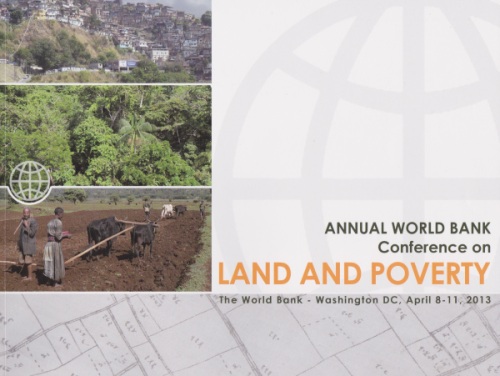
The theme of 2013 edition is “Moving towards transparent land governance:
Evidence-based next steps” with six thematic areas:
- Securing land rights and improving land use at the grassroots;
- Adjusting laws and institutions to address urban expansion and
governance;
- Innovative approaches towards spatially enabling land administration
and management;
- Supporting a continuum of rights in a decentralized environment;
- Mobilizing the private sector to improve land governance; and
- Sharing benefits from exploitation of land-based resources.
As in previous years, FIG is privileged to collaborate with the Bank as
the Profession continues to consider its contribution and relevance within
society, environment and economy, moving beyond its competencies in
measurement and technological sophistication and abilities.
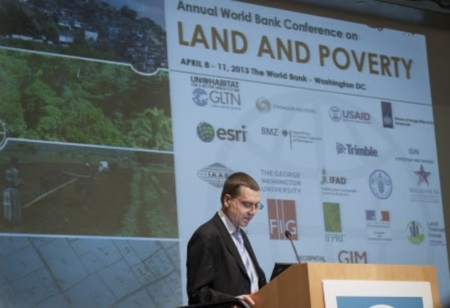
Klaus Deininger,
Lead Economist, Development Research Group,
The
World Bank.
Photograph courtesy of Natallya Makarenko, 2013
Within this year’s conference, FIG again participated in a
number of activities and events including the DGF Steering Committee Meeting
and a series of Pre-conference workshops on global support to voluntary
guidelines implementation; using land governance assessment framework to
inspire policy change; improving country level policy and practice; tracking
progress on land governance and stakeholder dialogue as well as the closing
panel discussion on “taking country platforms to the next level” on 8th
April 2013.
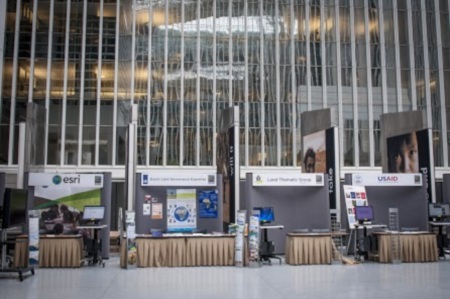
Photograph courtesy of Natallya Makarenko, 2013
In collaboration with UN-Habitat, Global Land Tool Network and the World
Bank, FIG facilitated a well-attended roundtable on Continuums within the
Continuum of Land Rights. The continuum of land rights calls for the
recognition and protecting of the range of prevailing possibilities with
adequate provisions to navigate and transition through the options. That is,
the concept of continuum is at the antipode of ‘one-size-fits-all’ mindset.
Hence, continuum rhymes with choice, transition and integration. For
instance land rights can range from legitimate to legal, and from documented
to non-documented. Recording rights can be on paper or on a most
sophisticated and advanced technology support. In all these situations, the
continuum approach posits that one can move from one level or gradient to
the other depending on needs, purpose, ability and interest. The focus of
the roundtable is to contextualize the continuum of land rights and explore
its wider implications in the land sector, land technology, land approaches
and methods, land measurements, land markets, etc. The scene setting
presentation was made by Dr. Clarissa Augustinus, Unit Leader: Land
and Global Land Tool Network, Urban Legislation, Land and Governance Branch,
UN-Habitat.
FIG knows that collaborative efforts to improve land governance must
continue and will require that the Profession does not complicate further
that which is already complex. The profession has to bring forth solutions.
This requires a change in attitude as well as to continue sustaining efforts
to improve land governance through the development of fit-for-purpose tools,
approaches and solutions. Tools and approaches with incremental
technological sophistication, robustness and accuracies.
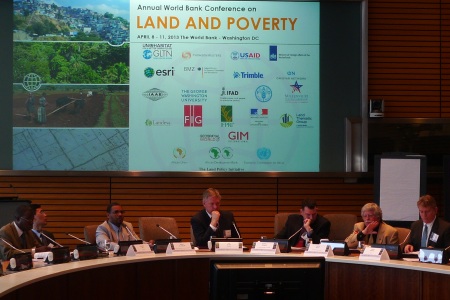
Session SPL01 - Spatial Positioning: Innovations and Partnerships chaired by
Kevin Barthel of Millennium Challenge Corporation, United States
There was also an Expert Group Meeting (EGM) convened by the
World Bank and FIG on the sideline of this annual conference, that brought
together representatives of donors, governments, professional bodies,
academe and industry to openly discuss “fit-for-purpose” approaches and
investment in support of land administration and management. The EGM
considered trends and issues, design options, importance of scale,
scalability and sustainability as well as evidence from experience.
Participants quickly and readily agreed that the Profession is and must
remain fit for purposes. Both the Bank and FIG agreed to progress this
agenda, initially towards a statement of principles on fit-for-purposes.
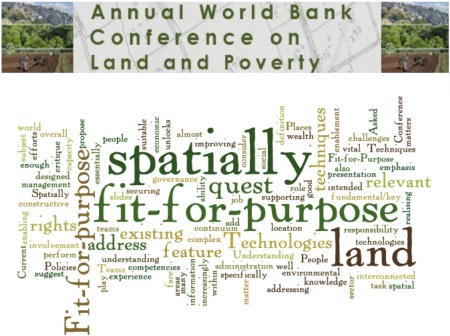
CheeHai TEO
April 2013
21 May 2013
|




























